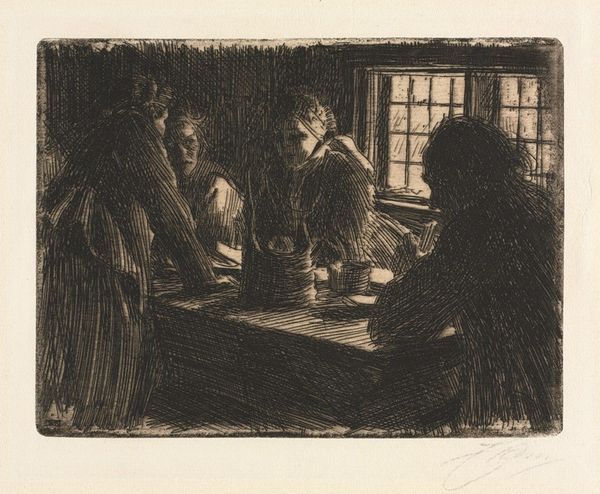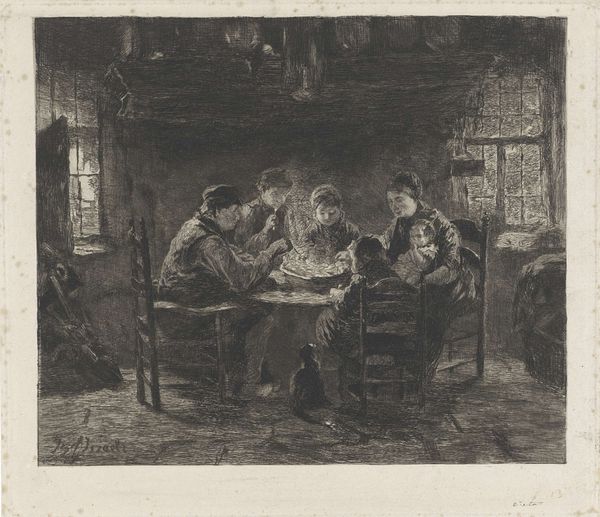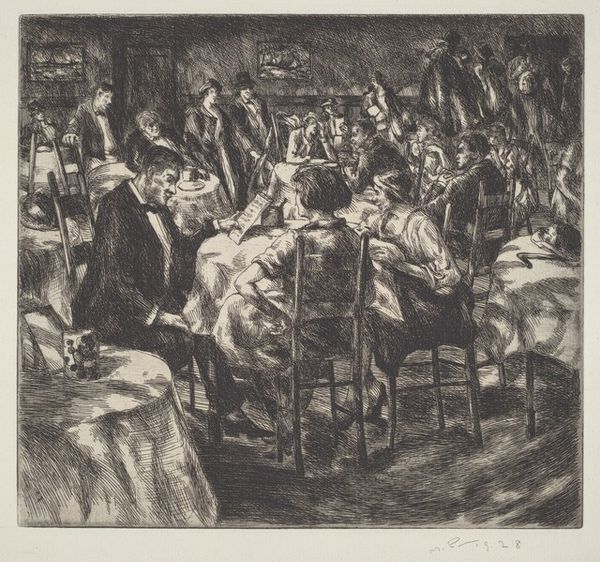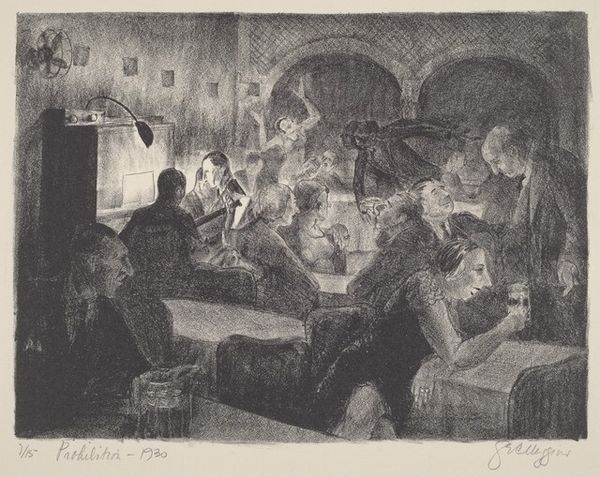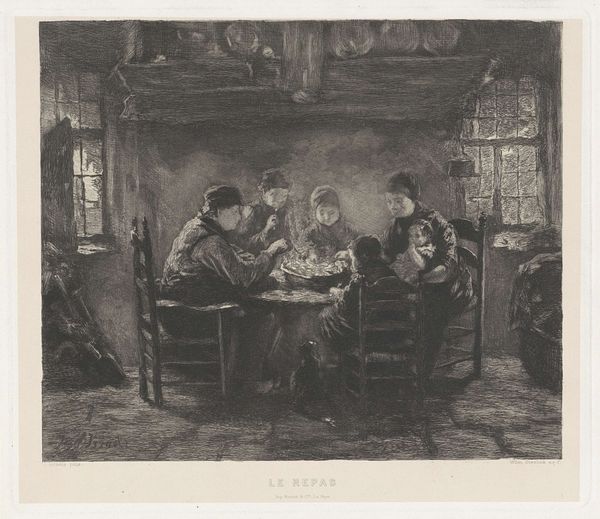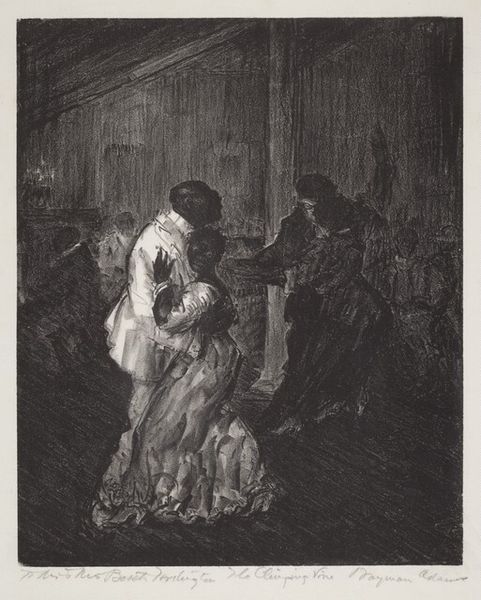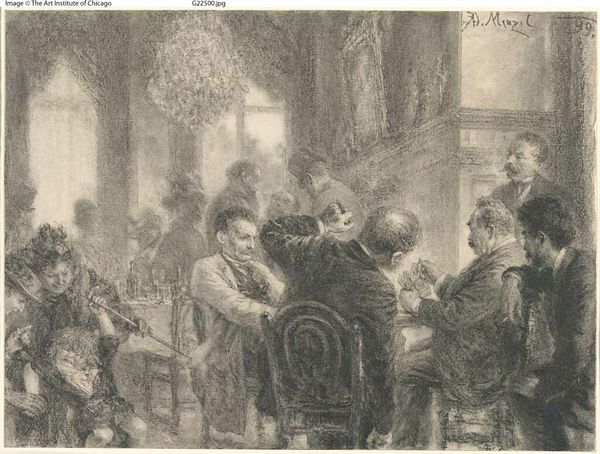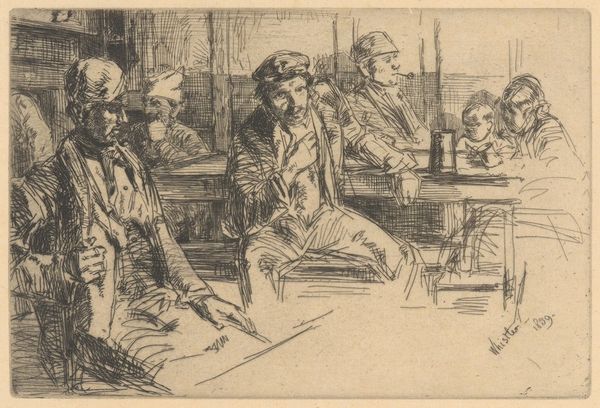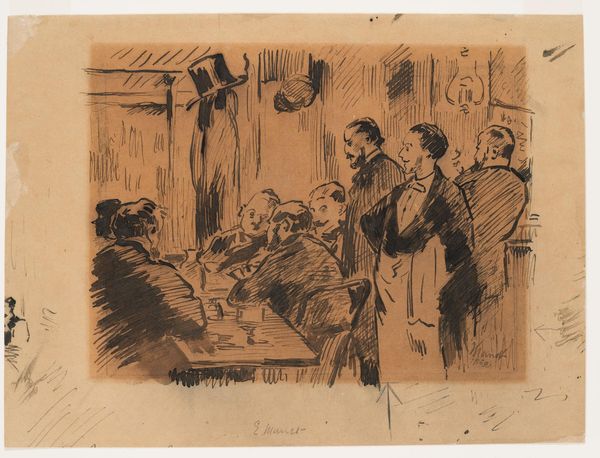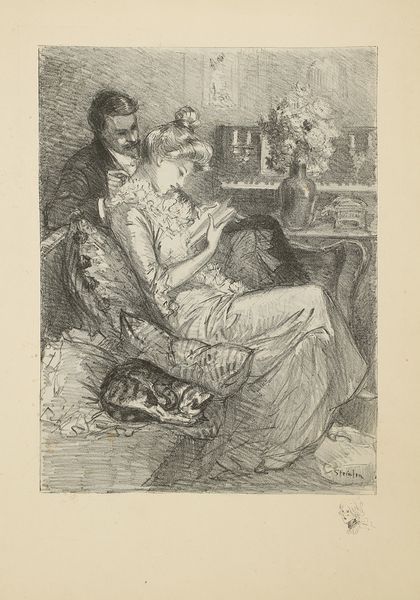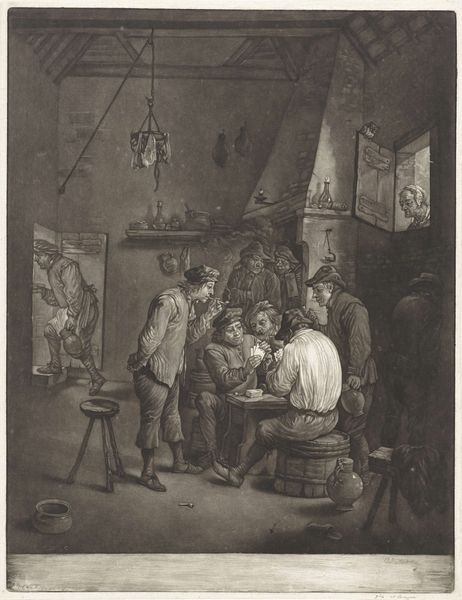
print, etching
# print
#
etching
#
figuration
#
ashcan-school
#
cityscape
#
genre-painting
#
realism
Dimensions: plate: 25 × 30.5 cm (9 13/16 × 12 in.) sheet: 32 × 40.2 cm (12 5/8 × 15 13/16 in.)
Copyright: National Gallery of Art: CC0 1.0
Curator: This etching by John Sloan, titled "The Barber Shop", dates back to 1915 and exemplifies the artist's deep engagement with urban life. What strikes you initially about this work? Editor: The immediate sensation is claustrophobia. The scene feels crammed, the lines of the etching creating a dense and intimate, almost intrusive space. I wonder, what does this depiction say about early 20th century American conceptions of masculinity and communal grooming? Curator: It's a keen observation. The material realities of printmaking—the copper plate, the acid bath, the laborious process of etching itself—are central to how Sloan renders this crowded interior. Look closely at the line work; it varies dramatically to suggest form, light, and texture. The consumption of everyday services, like getting a haircut or shave, is meticulously captured as an observable transaction. Editor: And what strikes me, thinking about consumption, is the absence of women as customers, even in service positions save one, relegated to the corner doing manicures. Considering this work emerged during the height of the women’s suffrage movement, I have to ask, what norms about gender and labor are being upheld in this space, and for whose gaze is this carefully delineated world created? Curator: It underscores Sloan's participation in the Ashcan School's project of documenting the daily lives of working-class Americans. But the "everyday" isn't neutral. The artist's means, and the subject’s class background, both contribute significantly to the overall mood and tone of observation here. The level of craft involved is an important component too. Etching as a medium speaks to accessibility but also careful application. Editor: Absolutely. There's a visible tension in portraying the real, unglamorous textures of ordinary urban lives. What statements can we, and indeed, should we make by turning marginalized subjects into our central artistic focus? We need to examine issues of voyeurism, access, and the politics of representation. What is "real" here and how do we unpack its meaning when gendered expectations remain very obvious? Curator: Indeed. The level of craftsmanship and materials speak volumes about artistic intent. Thank you for that perspective. Editor: A vital discussion on the tensions of representation in urban life that "The Barber Shop" evokes; definitely worth pondering further.
Comments
No comments
Be the first to comment and join the conversation on the ultimate creative platform.
